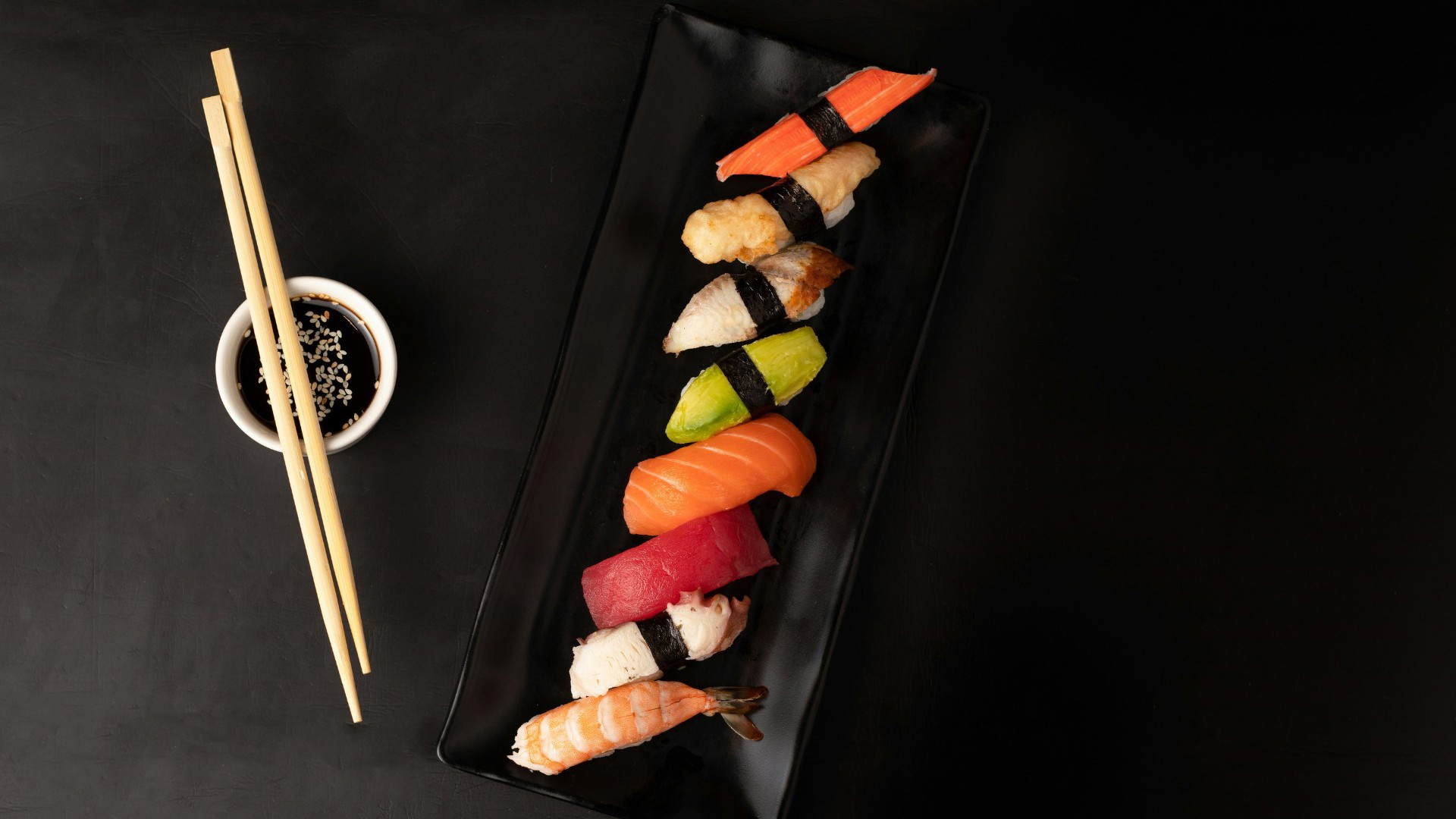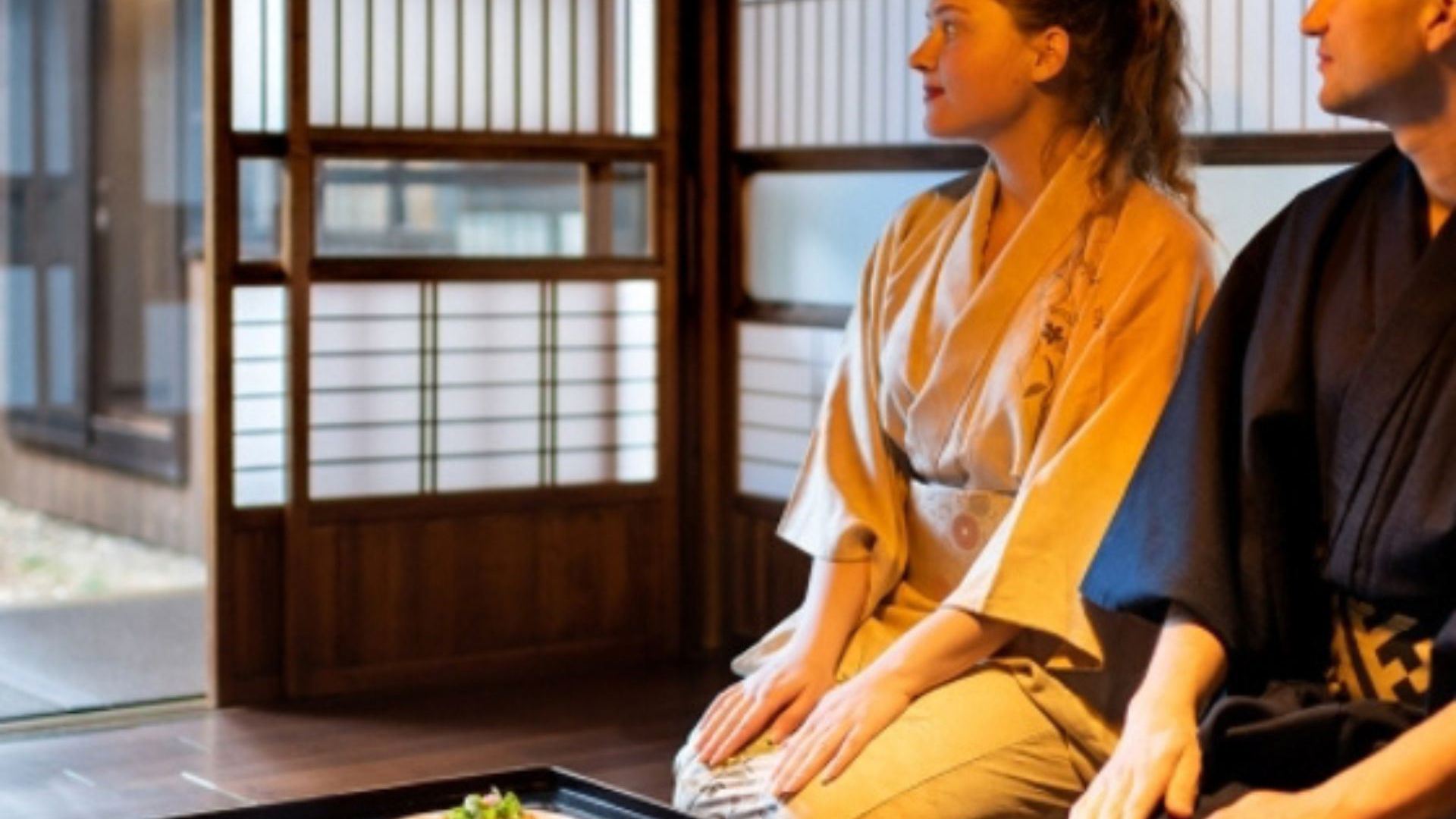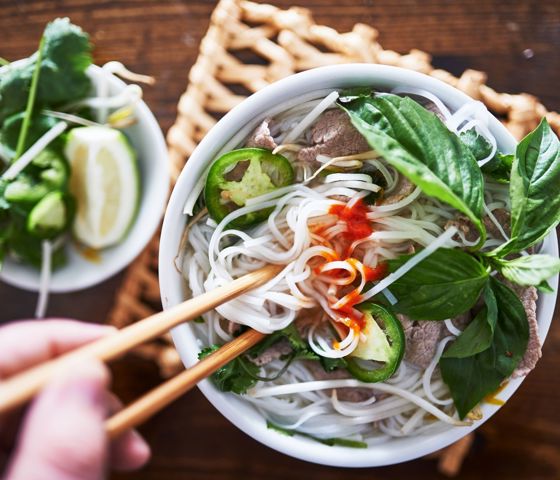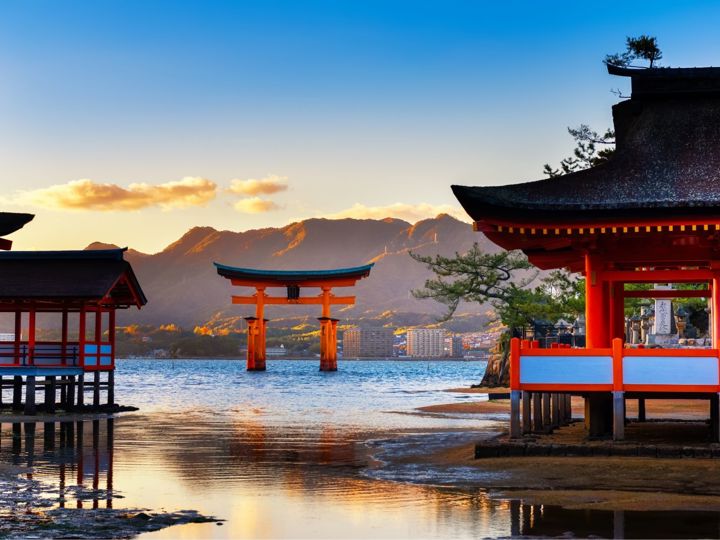Top 10 dishes you can't leave Japan without tasting

A holiday to Japan is like a feast for the senses, and the food is one of the highlights! Century-old dishes are served alongside trendy, popular creations – Japan’s food scene is all about sophisticated simplicity and super-fresh ingredients.
Whether you're wandering the bustling streets of Tokyo or exploring local eateries in Kyoto, these 10 must-try dishes should be at the top of your list.
Here are a few popular Japanese dishes you really shouldn’t leave Japan without trying.
Sushi
While some parts of the West might think of sushi as a luxury food, it actually has a humble history. Some people believe that around the second century A.D. raw fish was encased in rice and salt for preservation purposes, but it was this process that gave birth to the delicately crafted and artistically presented sushi dish as we know it. Sushi refers to the vinegared rice, and takes several forms including the commonly found nigiri (a slice of raw fish or seafood hand-pressed onto rice) or maki (in a roll, filled with vegetables and wrapped in seaweed). With these bite size servings, you can eat as much or as little as you like.

Ramen
You won’t have to travel far to find a decent ramen dish anywhere in Japan. Although the ingredients vary from region to region, this is a relatively inexpensive meal or snack consisting of egg noodles in a soup made with chicken or pork-bone broth and sometimes flavoured with salt, soy sauce or miso. A truly well-balanced dish, ramen will usually be served with delicately sliced braised chashu pork, nori seaweed, egg, and vegetables such as bean sprouts and corn.
Udon
There are a few variations to this classic Japanese staple, but udon is typically characterised by thick wheat noodles served either hot or cold. Udon can be served with or without soup and accompanied by toppings such as deep-fried tofu, tempura shrimp, or tempura vegetables. This is a great dish to test your slurping skills (if you get the soup of course).
Soba
Originating from Japan’s mountainous regions where buckwheat grows better than rice, soba is a buckwheat noodle dish usually served in a soy-based broth, or with the broth on the side for dipping. Unlike udon, the noodles are long and thin (like spaghetti) with a grey/brown colour and can be accompanied by seasonal vegetables, a soft-boiled egg, tempura and meat. Look out for the green soba too. Some udon restaurants will mix buckwheat with green tea powder to make a common variation called cha soba (you guessed it – that means “green tea soba”).
Yakitori
A simple dish that usually goes hand-in-hand with an ice-cold beer after a hard day’s work, yakitori is a great way to experience and enjoy the true and uninterrupted flavours of chicken. You can find almost every part of the chicken on a yakitori skewer which is grilled to perfection over charcoal. Most yakitori places will offer you a choice of flavouring for the chicken – shio, a simple but tasty salt seasoning; or tare, a slightly sweet barbecue-style sauce.
Tempura
Deep-fried dishes can be incredibly intimidating, especially if you don’t have a huge appetite or are looking for a light snack. But not tempura – this is in a class of its own. Tempura is a light, fluffy, and crunchy batter that coats seasonal vegetables or seafood. Tempura dishes will usually be served with soy-based broth for dipping and a small mound of grated radish, which you should add to the sauce before dipping your fried morsels into it. Any restaurant in Japan will know tempura is best served straight from the pan.
Yakiniku
You’ll have to roll up your sleeves for this one (it’s also a lot of fun). Yakiniku (Japanese barbecue) is where diners themselves are invited to barbecue slices of meat and vegetables over a hot plate in the middle of the table. Most restaurants will offer a choice of pork, beef, offal, chicken or seafood, as well as vegetables.

Okonomiyaki
One of the more filling Japanese dishes, okonomiyaki should be reserved for when you’re feeling most hungry. This is best described as a savoury pancake which can be filled with seafood or pork, and cabbage. Once grilled to perfection, the pancake is topped with dried aonori seaweed, bonito fish flakes, a dark sweet sauce, and mayonnaise. Some restaurants might even provide a hot plate so you can cook it to your own taste!
Gyoza
Japan is not really known for its “grab and go” street-food culture, but this is surely as close as it gets. Originally Chinese, gyoza is now a popular food often found at street stalls in or around train stations. Gyoza is a steamed or pan-fried dumpling filled with ground pork and seasoned with chives, onion, cabbage, ginger and garlic. Of course, that doesn’t mean Japanese chefs don’t experiment with a range of other fillings.
Tonkatsu
Put simply, tonkatsu is a deep-fried breaded pork cutlet. This cooking method produces a flavoursome, succulent meat with a contrasting crispy outer layer. Tonkatsu is a common menu item across Japan typically served with shredded cabbage, boiled rice, and miso soup. The dish is sometimes offered with Japanese curry (katsukare) and even egg (katsudon).
Inspired to indulge in authentic Japanese cuisine? From sushi and sashimi to savory ramen and tempura, Japan offers a delicious adventure for your taste buds. Connect with one of our Asia specialists today!
More Asia travel blogs
Best. Holidays. Ever!
Start here
Let us help you find the perfect holiday or deal. Here’s how to get in touch...

Want the inside word on all things travel?
Never miss a deal again. Sign up for our emails and get exclusive flight offers, travel tips, and be the first to know about special promotions.
By signing up, you have read or have an opportunity to read the Privacy Policy, and you agree to the provisions of the Privacy Policy.

Thanks for signing up, we’ll be in touch soon!
Hold on a sec, adventurer! We didn't quite catch your email. Sign up again to unlock your travel dreams!






































